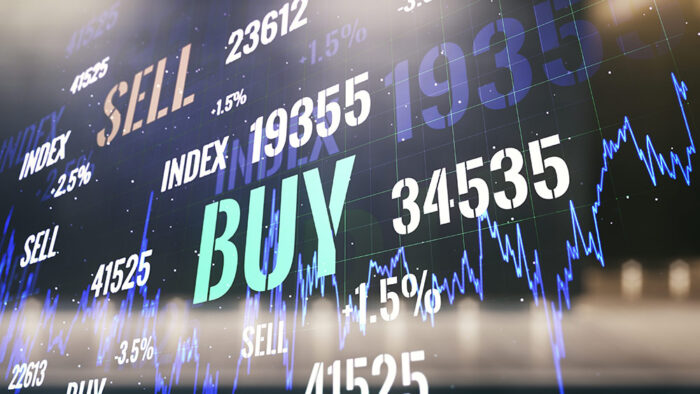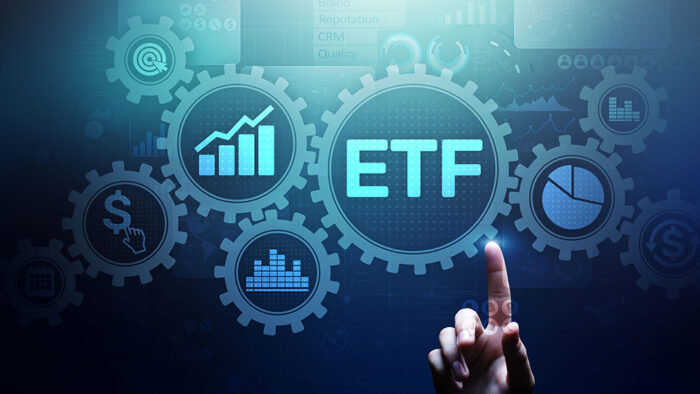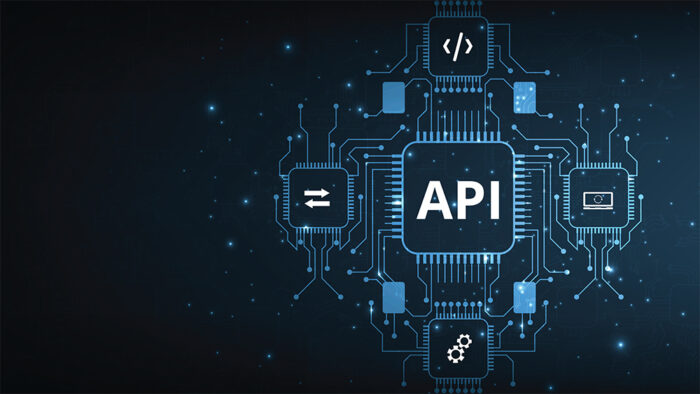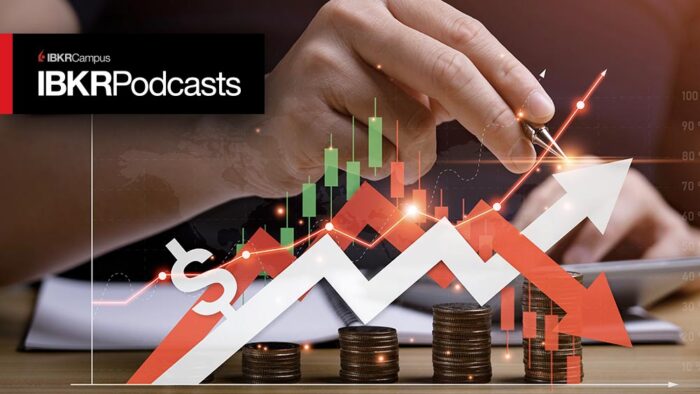With a 90% expectation that the Fed will lift rates again at its July meeting Neil Azous discusses the number one question amongst portfolio Managers these days, which is reinvestment risk and how far along the yield curve they should target.
Sponsor Information:
Email: nazous@rareviewcapital.com
Note: Any performance figures mentioned in this podcast are as of the date of recording (July 20, 2023).
Summary – IBKR Podcasts Ep. 95
The following is a summary of a live audio recording and may contain errors in spelling or grammar. Although IBKR has edited for clarity no material changes have been made.
Andrew Wilkinson
Hello, everybody. Welcome to today’s episode of another IBKR podcast. My name is Andrew Wilkinson; I’m your host today and I am joined by Rareview Capital’s Chief Investment Officer, Neil Azous. Welcome, Neil— How are you?
Neil Azous
Andrew, thank you for having me. Great to be here with you today.
Andrew Wilkinson
Well, if we’ve got you on the show, Neil, it must be very nearly an FOMC day. So, how are you seeing things heading into next week’s FOMC meeting?
Neil Azous
As always, Andrew, I answer that question by analyzing what the market is pricing regarding the path of interest rate policy. In probabilistic terms, the bond market right now is pricing a 95% chance of a 25-basis point interest rate hike at next week’s Federal Reserve meeting. And historically, Andrew, it’s very rare for the Fed to deviate from the market pricing of this magnitude when they go into the blackout period prior to the meeting. So, we view the upcoming meeting or the upcoming hike as a fait accompli; that is something that’s already happened or been decided. Secondly, Andrew, there’s a 40% chance of a second 25 basis point hike sometime by November, and the market has been oscillating between when that happens, either at the September meeting or the November meeting. Currently, it’s heavily skewed to the November meeting and this outcome, if it were to materialize, would actually turn the sequence to every other meeting— meaning the Fed hiked last May, they paused in June. They’re supposed to hike next week, maybe skip September, and then go back to hiking in November— that’s a sequence of every other meeting. After that, Andrew, the market is just pricing the first interest rate cut sometime between March and June of 2024 and it’s important to note that this is the farthest that first cut has been pushed back in the entire cycle. So, in simple terms, the market is just saying “higher for longer” and the new acronym everyone is using is H4L, higher for longer.
Andrew Wilkinson
Is this a perfect summer so far? Can you picture the horizon from where you’re sitting?
Neil Azous
Up front, Andrew, the short answer is yes, and let me explain why. Summer starts, I think on June 21st and today is July 20th, so we’ll call that a full month to be fair. And during that period, the S&P 500 is up about 4 1/2% and the bond market as measured by the aggregate index is down about 40 basis points. So, if you back that into the traditional 60/40 stock bond portfolio, the traditional mix is up about 3.1% in a full month, I think. If you annualize that, the industry’s dominant portfolio would be up north of 35% on the year. So, when you look at it that way, it’s easy to argue that that’s the perfect summer. A second way to answer that question, Andrew, is by looking at it through the lens of volatility across asset classes. If you were to combine the primary volatility gauge for stocks like the VIX, bonds, the MOVE index, the same ones for foreign exchange and crude oil— that composite has now fallen to its long-term average. So put another way, a money manager could be on vacation and not have to watch their screens for the first time in 18 months. So, for me, high performance, low volatility, and not having to be in your seat meets the definition of a perfect summer.
Andrew Wilkinson
Can you just talk a little bit then, Neil, about why July is such a big month traditionally for stocks seasonally? I guess, first of all, discuss seasonality a bit, what is it?
Neil Azous
So, I’m sure there’s a formal definition for market seasonality in Investopedia but let me give you what our definition is. So, market professionals are always looking for an edge and they are highly sensitive to pattern recognition. There are approximately 80 futures contracts across asset classes that we look at and, in most cases, the historical returns, for all of those products, go back decades. So, we have a treasure trove of data to analyze— decades of historical prices and 10’s and 10’s of different instruments to analyze. We can compare the historical returns in the upcoming month or period to the historical returns in all other months or similar periods back to that given contract’s inception, right? And then we can calculate “a hit ratio,” which examines how many times returns in the upcoming month have been higher than the average return in all other months. So now, there are those always looking for the reason why these patterns exist. And the answer honestly, in my experience, is that they’re typically idiosyncratic to that particular asset class or product. So, for example, crude oil tends to perform better during the driving season, I.e., this summer, when they’re coming out of that shoulder season. Makes sense, you know, we have to use more gasoline and so we need to refine find more crude oil, et cetera. Central banks tend to buy more gold in the second half of the year than in the first half of the year. So, the pattern of owning gold from September to December is much more powerful than in the first six months of the year. Japan is another great example, for reasons unknown to me, they have always repatriated assets, or their currency, into the end of their fiscal year in March. So, the dollar-yen tends to be weaker (or a stronger yen). Specifically, in the case to answer your question regarding U.S. stocks, July’s positive performance to me is associated with a new half year where investors, I guess, have to address their scorecard and a wall of money comes into the equity market quickly because most active managers tend to underperform their benchmark and they need to play catch up before it gets too late in the year. So again, there are these patterns you’re able to recognize them. You have a lot of this historical data and in stocks sometimes an easy explanation is best. And in our experience, it’s somebody saying, ‘oh man, the stock market is up 17% to end June and I’m only up 6%; I need to go get some very quickly before this truly gets away from me and I’m going to underperform dramatically, and my clients are going to be pretty upset.’ Just to give you one last example— so a more creative answer is that large caps are synonymous, specifically, large CAP technology is synonymous with a very long duration bond. And historically, July and August are the best months for U.S. Treasuries. So, if interest rates tend to fall during that period, why not own assets that look like a 30-to-50-year bond, like large cap technology? And perhaps that’s one explanation that helps us understand why the NASDAQ has been positive for 15 straight Julys.
Andrew Wilkinson
Now, let’s back up to bond investors and the overall money market. In the last, I’d say 4 to 8 weeks, those guys have had to rethink their views about additional Fed tightening. You hinted on this earlier on, Neil, can you describe the shifts in the sand for our audience?
Neil Azous
This answer I’m going to keep short and sweet, Andrew. This shift is simple, and this is the overarching set of themes— we’re having faster than expected disinflation. The recession outlook, which was a consensus view in the first half of the year, has been pushed out to 2024 as growth continues to muddle along as usual. And thirdly, investors are not positioned for it. This is a Goldilocks environment for risky assets or for risk parity strategies, especially as active managers, as I just mentioned, are underperforming both stocks and bonds materially. So, that’s really the answer. That’s the big shift— inflation’s coming down, growth is holding its own, and investors weren’t anticipating that in the first half of the year.
Andrew Wilkinson
Finally, Neil, you speak to a lot of portfolio managers. What do you hear from them? Especially, as we’re closing in on that peak for higher interest rates and as regards positioning further out along the yield curve.
Neil Azous
Our topic of conversation, Andrew, with financial advisors over the last, I would call it 4 to 8 weeks, and this is an overwhelming theme in our client meetings— It’s regarding fixed income and it’s whether to extend duration. Put another way, everyone is asking if they should increase the maturity of their U.S. Treasury portfolio from, say, a zero to two-year maturity to somewhere between 5 and 10 years now because the end of the Fed hiking cycle is near. And here’s why they’re asking that, Andrew— many investors, if not most investors, sold their fixed income exposure and rotated that money into short term instruments such as U.S. Treasury bills or government money market funds. And anecdotally, you know, based on these conversations recently that we’ve had, we would describe it this way regarding the investor positioning, they own their typical 60% of equities, they may be 10% in fixed income and they’re dramatically still overweight cash at 30%. With interest rates likely to fall over the next 12 to 24 months, this “reinvestment risk” of those short-term instruments that are going to mature in fixed income is extremely high. If you’re drawing up a retirement plan, Andrew, for a client, if a T-bill yield drops from its current level of, call it 5 1/4%, back down to 3% or maybe even 2%, will that client still be able to meet their retirement goals? And what if it were to drop to 0? Just to be clear, these are not explicit calls, it’s more about the risk of these outcomes or going through the scenario analysis if the extremes were to happen. So, if the answer is no to those questions, then you need to begin lengthening the fixed income duration of that client account to a normal weighting. That’s not very hard to do— your T bill matures; you take that money. Instead of buying another one-year T bill or six-month T bill, you buy a four-year piece of paper or six-year piece of paper or some version of that. Secondly, I would just say Andrew, the second, I guess, big conversation we’re having with other portfolio managers in all various capacities, right? This isn’t always about matching somebody’s assets to their liabilities like I just described a minute ago. In terms of that reinvestment risk, there are plenty of folks out there that want to be opportunistic and are looking for the next best investment expression— whether it be in equities or in fixed income. In the case of fixed income, it’s overwhelming to us, in our conversation, that everyone wants to know how to take advantage of the yield curve shifting from the deepest inversion in history to a much steeper slope over the next 6 to 18 months. And how do they capture that? How do they take advantage of that? What instruments do they need to buy? What money managers should they be investing in? And that is, on the opportunistic or alpha generation side, definitely the number one conversation we’re having and what it really tells me is while everyone’s still talking about it, nobody has it yet: You’re not late to that party or investment expression. You would still be early to it or right in line if that is something that you wanted to express. So, Andrew, those are the two primary discussions we’re having with other investors; the concern over their reinvestment risk and what to do and then something on the opportunistic side around taking advantage of the yield curve.
Andrew Wilkinson
My guest today has been Neil Azous, CIO, and founder at Rareview Capital. Thank you very much for joining me today, Neil.
Neil Azous
Thank you, Andrew, have a great day!
Andrew Wilkinson
And folks, if you enjoyed today’s edition, please do leave us a review wherever you download your podcasts.
Disclosure: Interactive Brokers
The analysis in this material is provided for information only and is not and should not be construed as an offer to sell or the solicitation of an offer to buy any security. To the extent that this material discusses general market activity, industry or sector trends or other broad-based economic or political conditions, it should not be construed as research or investment advice. To the extent that it includes references to specific securities, commodities, currencies, or other instruments, those references do not constitute a recommendation by IBKR to buy, sell or hold such investments. This material does not and is not intended to take into account the particular financial conditions, investment objectives or requirements of individual customers. Before acting on this material, you should consider whether it is suitable for your particular circumstances and, as necessary, seek professional advice.
The views and opinions expressed herein are those of the author and do not necessarily reflect the views of Interactive Brokers, its affiliates, or its employees.
Disclosure: Futures Trading
Futures are not suitable for all investors. The amount you may lose may be greater than your initial investment. Before trading futures, please read the CFTC Risk Disclosure. A copy and additional information are available at ibkr.com.





















Join The Conversation
If you have a general question, it may already be covered in our FAQs. If you have an account-specific question or concern, please reach out to Client Services.